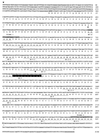Cloning of the gene for monogalactosyldiacylglycerol synthase and its evolutionary origin
- PMID: 8990209
- PMCID: PMC19336
- DOI: 10.1073/pnas.94.1.333
Cloning of the gene for monogalactosyldiacylglycerol synthase and its evolutionary origin
Abstract
Monogalactosyldiacylglycerol (MGDG) synthase (UDPgalactose:1,2-diacylglycerol 3-beta-D-galactosyltransferase; EC 2.4.1.46) catalyzes formation of MGDG, a major structural lipid of chloroplast. We cloned a cDNA for the synthase from cucumber cDNA library. The full-length cDNA clone was 2142 bp, and it contains a 1575-bp open reading frame encoding 525 aa. The open reading frame consists of the regions for a mature protein (422 aa; Mr of 46,552) and transit peptide to chloroplast (103 aa). Although the molecular weight of mature protein region matched that purified from cucumber cotyledons, it was quite different from those purified from spinach (approximately 20 kDa) reported by other groups. The mature region of the protein was expressed in Escherichia coli as a fusion protein with glutathione S-transferase. The expression in E. coli showed that the protein catalyzed MGDG synthesis very efficiently. Therefore, we concluded that the cDNA encodes MGDG synthase in cucumber. In addition, the deduced amino acid sequence of the MGDG synthase cDNA showed homology with MurG of Bacillus subtilis and E. coli, which encode a glycosyltransferase catalyzing the last step of peptidoglycan synthesis in bacteria. This sequence homology implies that the machinery of chloroplast membrane biosynthesis is evolutionarily derived from that of cell wall biosynthesis in bacteria. This is consistent with the endosymbiotic hypothesis of chloroplast formation.
Figures




Similar articles
-
Biochemical and topological properties of type A MGDG synthase, a spinach chloroplast envelope enzyme catalyzing the synthesis of both prokaryotic and eukaryotic MGDG.Eur J Biochem. 1999 Nov;265(3):990-1001. doi: 10.1046/j.1432-1327.1999.00801.x. Eur J Biochem. 1999. PMID: 10518794
-
The multigenic family of monogalactosyl diacylglycerol synthases.Biochem Soc Trans. 2000 Dec;28(6):732-8. Biochem Soc Trans. 2000. PMID: 11171188
-
In vitro reconstitution of monogalactosyldiacylglycerol (MGDG) synthase regulation by thioredoxin.FEBS Lett. 2006 Jul 24;580(17):4086-90. doi: 10.1016/j.febslet.2006.06.050. Epub 2006 Jun 30. FEBS Lett. 2006. PMID: 16824521
-
Molecular cloning of cucumber phosphoenolpyruvate carboxykinase and developmental regulation of gene expression.Plant Mol Biol. 1994 Oct;26(1):423-34. doi: 10.1007/BF00039551. Plant Mol Biol. 1994. PMID: 7948888
-
E. Coli MurG: a paradigm for a superfamily of glycosyltransferases.Curr Drug Targets Infect Disord. 2001 Aug;1(2):201-13. doi: 10.2174/1568005014606116. Curr Drug Targets Infect Disord. 2001. PMID: 12455415 Review.
Cited by
-
SENSITIVE TO FREEZING2 Aides in Resilience to Salt and Drought in Freezing-Sensitive Tomato.Plant Physiol. 2016 Nov;172(3):1432-1442. doi: 10.1104/pp.16.01183. Epub 2016 Sep 6. Plant Physiol. 2016. PMID: 27600812 Free PMC article.
-
Maize opaque5 encodes monogalactosyldiacylglycerol synthase and specifically affects galactolipids necessary for amyloplast and chloroplast function.Plant Cell. 2011 Jun;23(6):2331-47. doi: 10.1105/tpc.111.087205. Epub 2011 Jun 17. Plant Cell. 2011. PMID: 21685260 Free PMC article.
-
Diversity in Biosynthetic Pathways of Galactolipids in the Light of Endosymbiotic Origin of Chloroplasts.Front Plant Sci. 2016 Feb 5;7:117. doi: 10.3389/fpls.2016.00117. eCollection 2016. Front Plant Sci. 2016. PMID: 26904079 Free PMC article. Review.
-
Two types of MGDG synthase genes, found widely in both 16:3 and 18:3 plants, differentially mediate galactolipid syntheses in photosynthetic and nonphotosynthetic tissues in Arabidopsis thaliana.Proc Natl Acad Sci U S A. 2001 Sep 11;98(19):10960-5. doi: 10.1073/pnas.181331498. Proc Natl Acad Sci U S A. 2001. PMID: 11553816 Free PMC article.
-
Changes in intracellular energetic and metabolite states due to increased galactolipid levels in Synechococcus elongatus PCC 7942.Sci Rep. 2023 Jan 5;13(1):259. doi: 10.1038/s41598-022-26760-4. Sci Rep. 2023. PMID: 36604524 Free PMC article.
References
-
- Murphy D J. Biochim Biophys Acta. 1986;864:33–94.
-
- Murphy D J. FEBS Lett. 1982;150:19–26.
-
- Murata N, Higashi S, Fujimura Y. Biochim Biophys Acta. 1990;1019:261–268.
-
- Joyard J, Douce R. In: Biochemistry of Plants. Stumpf P K, editor. New York: Academic; 1987. pp. 215–274.
Publication types
MeSH terms
Substances
Associated data
- Actions
LinkOut - more resources
Full Text Sources
Other Literature Sources

